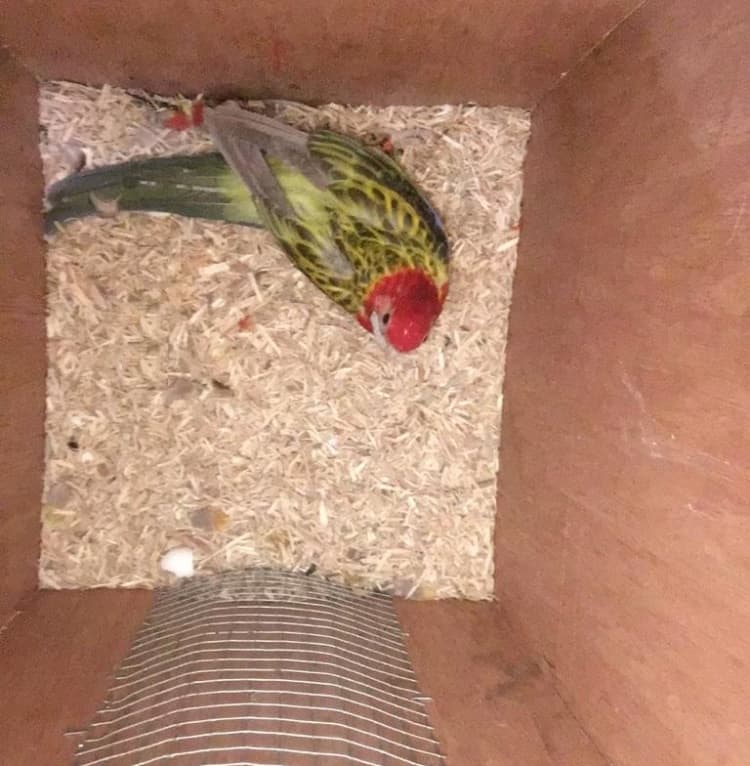Informative
Bird Breeding
Bird breeding can be very rewarding when everything goes well. However, it is not for everyone and bird breeding should only be done by those who have experience in bird breeding.
Depending on the type of bird you are going to breed, the average size of clutch can be anywhere from 2 to 6+ eggs. E.g. African Grey normally has a clutch of 1-3 eggs, Cockatiel 4 – 6 eggs and Zebra Finch 3 – 7 eggs.
Before you take on the task of breeding your pair, make sure you have read everything there is to read about your birds. There is a big difference between breeding Diamond Doves or Cockatiel for an example. Therefore it’s important to learn about your birds before start breeding. But whatever bird it is you are going to breed there are few things they all have in common as listed below:
Time needed: 4 minutes
- Breeding in aviary or breeding cages.
Birds can be bred in aviary or breeding cages, which you can also make yourself. It all depends on what bird you are breeding. Colony of Lovebirds or Cockatiels will happily breed in a large aviary while it would be a problem trying to do so with Parrotlets. Which ever way you go, aviary or breeding cage, make sure it’s big enough and easy to clean. If you are going to use outdoor aviary it has to have a shelter for rain and sun. If indoor aviary or breeding cage make sure it provides 12 to 15 hours of light. This can be UV artificial light etc.
- Nest Boxes
The nest boxes have to be of the right size for the bird you are breeding. It need to have either access on it’s size for you to open, or at the top as it’s iportant to know what’s going on in your box. Are there some eggs already, chick hatching etc. If the box is on the outside of the cage/aviary you can also install a small camera on the top so you don’t have to open and interupt the parents. This is espcially good when breeding medium to large parrots.
- Parasites
Keep an eye on parasites e.g. mites etc. Even though you clean your cage/aviary on a regular basis parasites can be hard to get rid off. By treating your birds Ivermectin or similar products, you are in better control of keeping on top of what could easily become a big problem.
- Sexing
Make sure you have sexed your breeding pair correctly. Some birds are easy to sex while others need to be DNA sexed.
- Breeding Age
Your breeding pair need to be sexually mature as breeding too young birds can damaged them.
- Are they Healthy
For the larger parrots a visit to the vet or DNA sample to the lab can tell you if they are. With smaller birds like finches, parakeets, cockatiels etc. have a good look at them. Are their eyes bright? Do they seem to be genarally happy; flying around, eating, drinking etc.? By monotoring your birds you will start to know them and spot if there are any problems.
- Unrelated
Only breed unrelated pairs. This is easiest done by getting birds from different breeders and then keep a log on your own birds and their chicks. By breeding related birds you can produce chicks with serious birth defects.
- Supplements
Food and supplement before the breeding season is as important as during the breeding season. By providing your birds with a good food, which can be a mixture of high quality seed mix and fresh fruit and vegatable, and supplements like calcium you are more likely to have a problem free breeding season. Lack of good nutrition can cause all kinds of problems e.g. eggbound etc. All year round we add Calcivet to the drinking water, twice a week. And during the breeding season we add EasyBird to the softfood.
- Candling
Approx. week after the last egg was laid you can ‘candle’ the clutch to see if they are all fertile or not. If there are infertile eggs it’s good to get rid of it as it’s only going to take up space for no reason. There are several ways to candle eggs but it’s best to do it without having to remove the eggs from the clutch. This handy tool is ideal to use as you can easily candle the whole clutch without touching the eggs. A fertile egg has wains inside it that can be seen when candled.
- Hatching
It all depends on what birds you are breeding if only one of the parent is sitting on the eggs while the other makes sure to feed it or if they split the duty between them. When the time comes and the hatching is over, there might be one or two eggs that do not hatch. By candling them (if you haven’t already done so) you can see if there is a life chick in there or if it’s safe to discarge of them. From now on you need to monitor your new family and make sure they are all developing at similar phase. In most cases you shouldn’t have a problem but if one seem to be left out you might have to interveen and hand feed it to give it the food it need to grow as its siblings.

